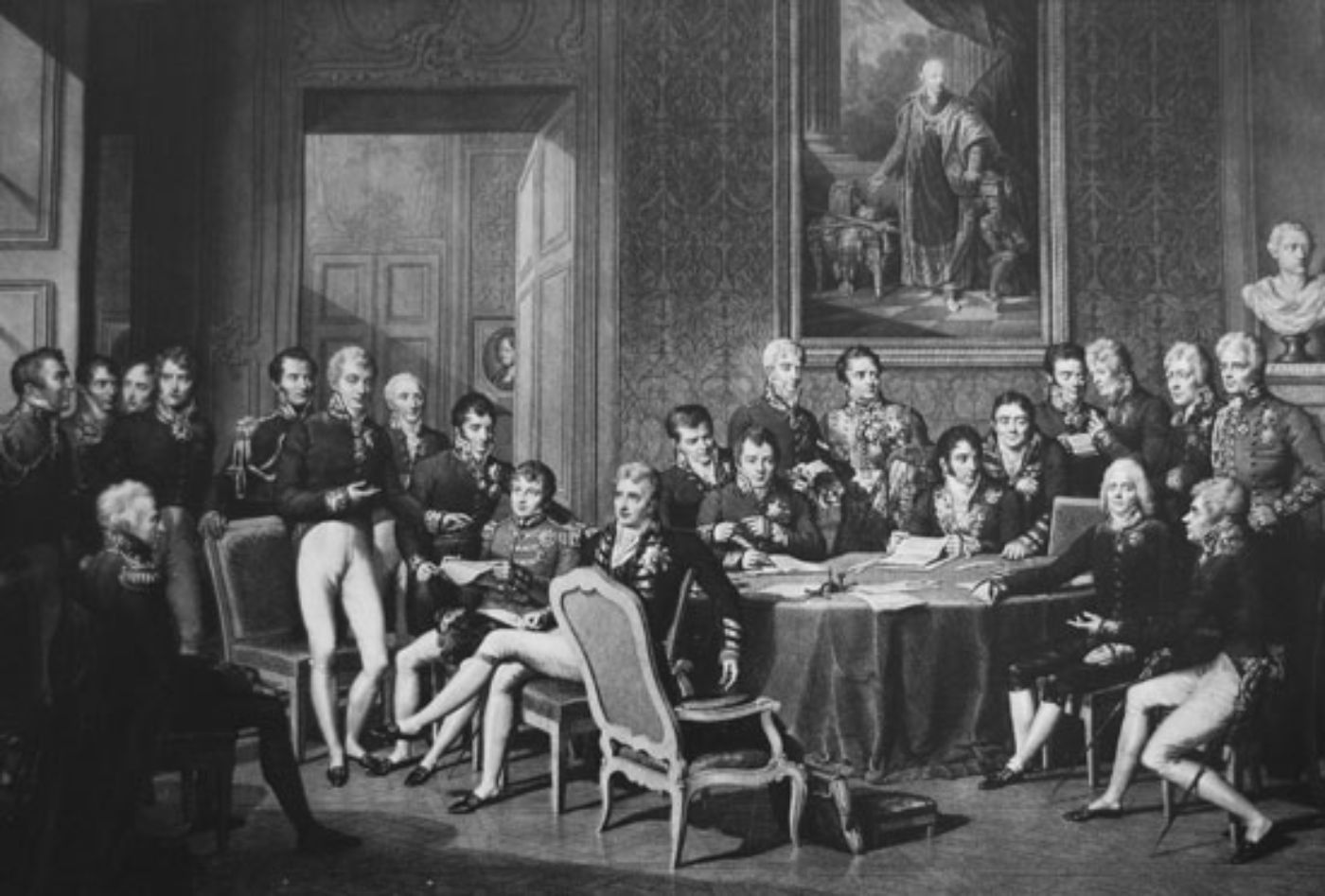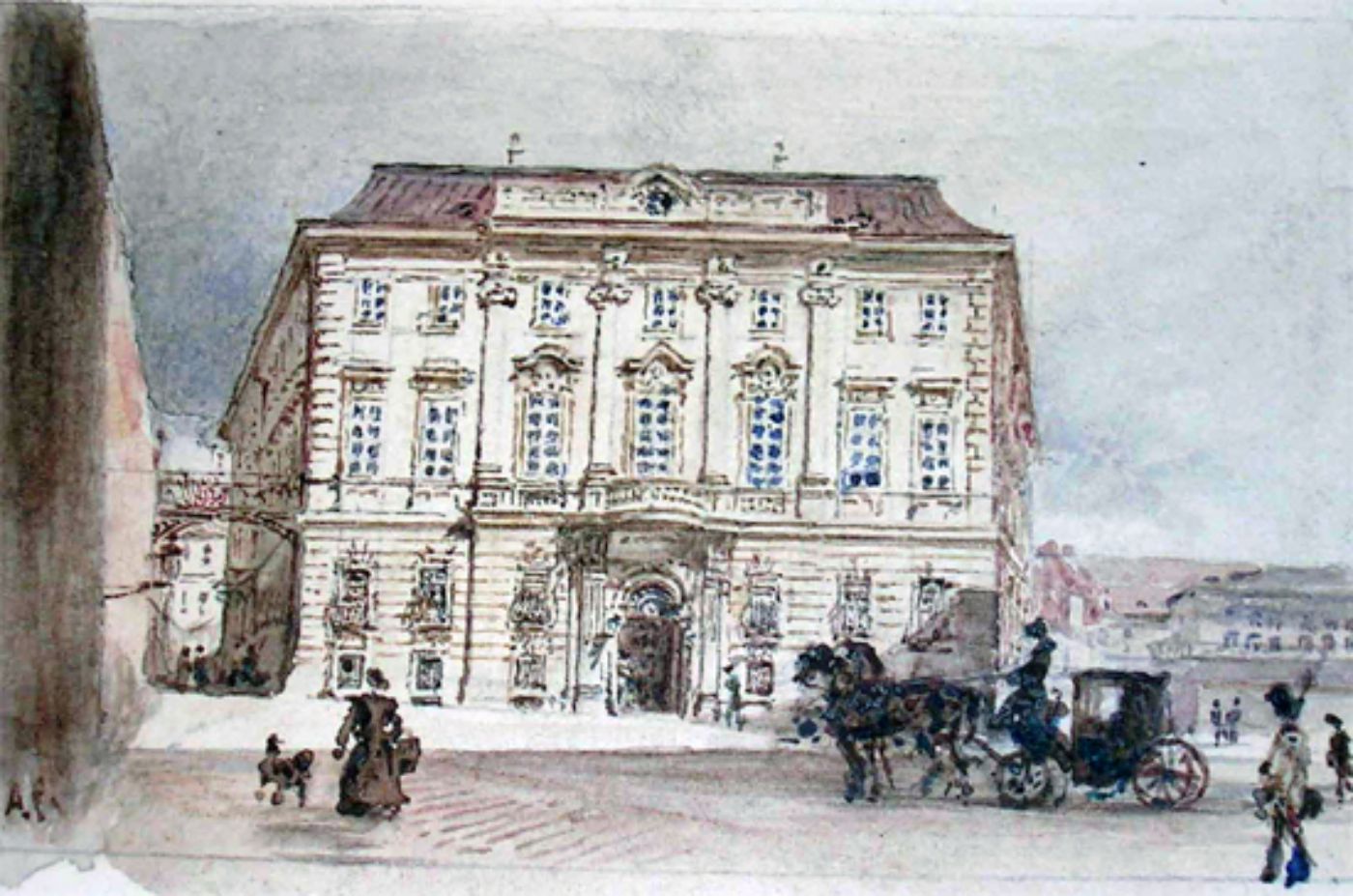The Congress of Vienna
In 1814 and 1815 the building on Ballhausplatz experienced one of its finest hours when it became the hub of European political activity. Following the defeat of Napoleon Bonaparte, monarchs and diplomats from some 200 European states, provinces and cities flocked to Vienna in late summer 1814 to reorganise the distribution of power in Europe. The "coachman of Europe", the Austrian Foreign Minister Clemens Wenzel Prince Metternich, took the lead role.

The main goal was to restore the territorial order that had existed before the Napoleonic conquests. At the same time, however, potential new conflicts between the powers were to be defused and existing ones resolved by diplomatic means.
The negotiations were described by all participants as extremely protracted. This stands in sharp contrast to the social life of the period. The Viennese offered their international guests plenty of opportunities for diversion with balls and other events giving rise to the dictum "the Congress dances."
Nevertheless, the manner in which the commissions and committees operated and the results they generated came to shape the future. Among other things, slavery was condemned. The balance of power negotiated at the Vienna Congress between the 5 great powers Russia, Great Britain, France, Austria and Prussia did indeed prove to be comparatively stable. Its basic features lasted almost 100 years until the outbreak of World War I in 1914.
Even today, the most important room in the Federal Chancellery bears the name Congress Hall in commemoration of this event.
